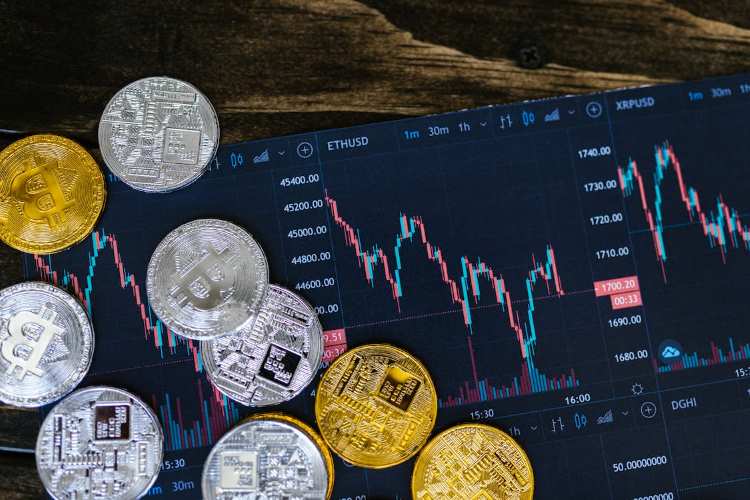
The younger readers or those who have been keeping up with the Indian music charts might remember the song that went viral few years ago #WhyThisKolaveri. In Tamil, the word kolaveri means murderous rage. This could be a cool way to define the investor acceptance of an intangible product (asset, if one accepts it as so), as well as the Indian officialdom’s worries about virtual digital assets (VDA).
A digital asset can be broadly defined as anything that can be created and stored digitally, which is identifiable and discoverable, and has or offers value. Data, images, video content, written content, and audio content can be digital assets with assignable ownership rights. In the lingo of writers, all the original text in this article are digital asset that I own as its creator, while anything I have quoted or sourced from will be identified in the credits / bibiliography as belonging to other asset owners.
Around 15 years ago, the advent of blockchain brought in new possibilities to the concept of asset ownership. Blockchain is a shared and immutable ledger that allows recording of transactions and tracking of assets in a business network.
READ I Air India’s record purchase marks a turning point for aviation industry
It was actually conceptualised as a “cryptographically secured chain of blocks” by Stuart Haber and W Scott Stornetta in 1991. It was only in 2008 that yet-unknown individual(s) using the pseudonym – Satoshi Nakamoto – outlined the model for a blockchain. The very first blockchain-based public-ledger for transactions was made using bitcoin in 2009. So, it is a myth when people confuse blockchain with bitcoin or other crypto currencies.
Tokenisation is the process of replacing sensitive data with unique identification symbols, which can relay all the essential information about that original data without compromising its security. Tokenisation has actually existed for many decades.
Do you remember buying video gaming coin tokens or subway station ticket tokens that you would drop in the access / exit gate slot? Well, they basically converted cash (coins or notes) into tokens and allowed for transactions to occur without storing those currencies. In the digital world, tokenisation does the same job — of acting as a surrogate for a value or valuable asset. Tokenisation has been used for long for security of credit card or payment data and other financial transactions.
READ I ‘World looking at India’s G20 presidency with hope’
Tokens are created with a mathematically reversible cryptographic function with a key / with a nonreversible function such as a hash function / with an index function or randomly generated number. The token becomes the exposed information, and the sensitive (original) information that the token represents, is stored securely in a centralised server known as ‘token vault’ (which is where the original information can be mapped back).
Vaultless tokenization is also possible where the tokens are stored using an algorithm. These technological applications have led to investable asset types such as asset-backed tokens, tokenised real estate, NFTs, and cryptocurrencies.R
Regulation of virtual digital assets
Virtual Digital Assets is a sunrise sector globally. It has had its moments of high valuations, with sharp volatility in pricing, too few of the large (funded and valued) platforms going bust. No wonder that we have also seen regulatory and policy suspicions to legal face-offs.
Digital assets and cryptocurrencies are pushing the boundaries of existing commercial and regulatory definitions. As the investors as well as their asset investment values increase in number, the asset investment allocation moves from conventional asset classes to the emerging digital ones. This is where it worries the regulators. The regulators, including the RBI, worry about the intrinsic value of the digital assets.
They also worry if the inherent design of digital assets is to actually ignore and bypass the regulated framework of the monetary system. The basis of this worry is the damage it could pose to the monetary stability and financial systemic resilience. Having said that, many countries including the US, already have a regulatory system in treating these VDAs as an asset class, and have legal sanctity as well as taxation similar to other financial assets.
VDAs in India
Despite the past 18 months of global volatility and policy concerns, VDAs are still seen as an attractive asset class with increasing incremental investments. The Union Budget 22-23 (presented in Feb 2022) had attempted to tax Virtual Digital Assets to track transactions and income sources to curb speculation, possibly even trading in VDAs, and developing safety mechanisms for financial stability.
This year’s Union Budget (FY23-24) has stayed silent on this topic, despite RBI’s opposition to cryptos. One expects that India would use the G20 platform for conversations with global policy makers to arrive at a common thought process.
The current policy stand (or lack of it) around digital assets has only led to domestic investors shifting their trading to foreign platforms, not necessarily staying away from VDAs. Conversations with industry practitioners indicate that over 15 lakh users and over Rs 30,000 crore of transactions have moved from domestic VDA exchanges to foreign ones during Feb-Oct 2022 period alone.
This defeats the intent to track VDA investors for taxability as well as collecting tax revenues. Over the next four years, an estimated tax revenue loss from such investor migration to foreign platforms is around $1.2 trillion (nearly Rs 100 lakh crore).
The regulatory system seems to be worried about VDAs from their lens of equating it to currency. It has only driven the Indian investors to markets where India does not have a regulatory or supervisory authority. This is a cue to policymakers to look at bringing the Indian VDA exchanges under markets regulator SEBI for stronger supervision.
If the VDA exchanges are treated akin to securities exchanges, it would allow for the strict implementation of know your customer (KYC) and anti-money laundering (AML) policies, real time market and trading surveillance, and tighter regulatory supervision of the exchanges themselves.
This can also allow for higher governance standards in the VDA sector by onboarding public interest directors, establishing robust risk management policies, mandating minimum level of capital for these VDA platforms and for them to disclose real-time proof of reserves that can ensure that they have sufficient resources. Such a move can be supplemented by having strong fit and proper criteria for the promoters and KMPs of such exchanges, and allow for redressal of consumer grievances through ombudsperson mechanisms.
Newer asset classes
It would be worth thinking about the genesis of humans and how social adoption of finance evolved. For example, early humans did not have the concept of money or wealth. The 19th century bankers did not deal with carbon credits or mutual funds. Just 20 years ago, we could not have dreamt of transacting finance on digital medium or without physical branches of financing institutions. It is evident that scientific or social or political innovations have led to newer asset classes.
Only with political need for action around climate crisis, did the financing world develop asset class of carbon credits. Concept of government (sovereign) bond started in 1694 when Britain raised monies to fund its war against France. With the wealth that the industrial revolution created and the need for a formalised framework for ownership of those entities, came the concepts such as company stock and equity capital.
Importantly, with every industrial revolution, the concept of newer asset classes emerged out of human need to store, utilise and monetise these assets and wealth. Along with it, came the then-social sanction and acceptance of the authorities, and importantly the states. But then, it would be important that the state (through its financial and monetary regulators) controls the narrative around what are its acceptable currency and asset classes.
Not all regulatory efforts are successful. For all the centuries of human and regulatory experience in dealing with real estate, India still has challenges in curbing money laundering using its AML rules and stopping misuse of unreal valuations. Yet, the regulators oppose newer asset classes — something that prompts critics to call it a regulatory bias.
Today, there are commercially available market surveillance solutions that can detect suspicious digital asset transactions. They can detect trends of high-risk transactions, detect systemic frauds and highlight market activities that are outside of usual trading patterns. They use statistical modeling as base, and use AI based capabilities including machine learning (ML) and natural language processing (NLP).
This is where governments and regulators will have a societal obligation – they have to stop anything that might create public nuisance or instability across our official systems including finance. But they simply cannot push it under the carpet without creating more instability.
We seem to assume the worst of any emerging technology or newer asset classes based on these technologies. Instead, can we simply sandbox these asset classes and build regulatory guardrails around them? This could solve for both regulatory challenges of their lack of operational expertise around emerging technologies, as well as fostering development of newer ideas.
Srinath Sridharan is a strategic counsel with 25 years experience with leading corporates across diverse sectors including automobiles, e-commerce, advertising and financial services. He understands and ideates on intersection of finance, digital, contextual-finance, consumer, mobility, Urban transformation, and ESG. Actively engaged across growth policy conversations and public policy issues.

